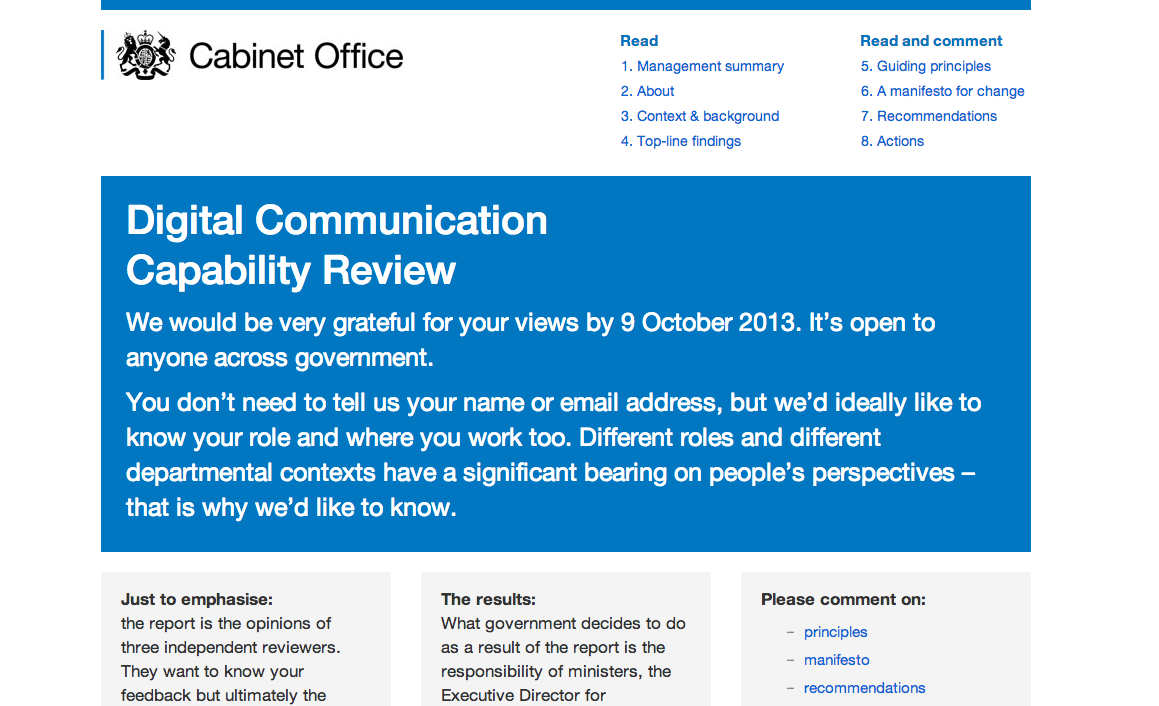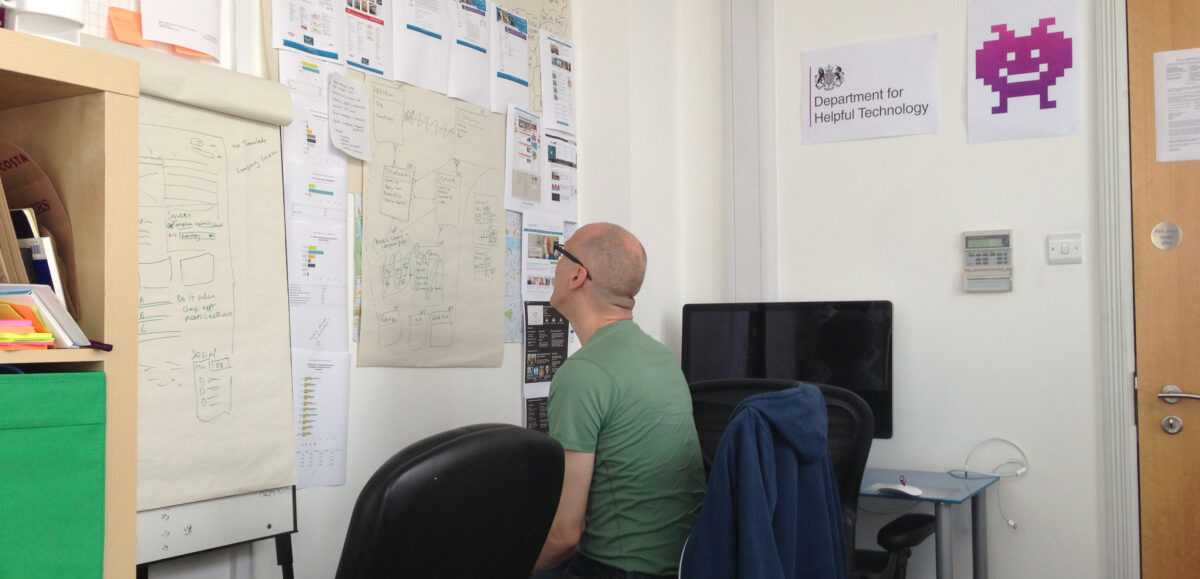If GOV.UK is delivering the website, what’s the purpose of digital communications teams in government departments?

That’s one of the interesting issues tackled by the Cabinet Office’s Digital Communication Capability Review, whose draft report is online for public comment for another couple of days.
It’s a fine piece of work, led by some creative thinkers inside government alongside some interesting outsiders with deep and varied experience of digital (disclaimer: I was one of the people they interviewed).
The bits I like most are the principles and manifesto, which shine a light on some of the issues holding back good digital communication in central government:
- IT networks which prevent civil servants doing their jobs with commonplace digital tools
- The focus on Twitter, to the exclusion of other digital channels and thinking
- The deliberate, understandable constraints that GOV.UK places on branding, content and engagement on its platform, and the need to clarify roles and responsibilities (and that digital communication is a different thing from digital service delivery)
One of the external reviewers, Max St John of Nixon McInnes, has written about the process and why rather than just coming up with worthy recommendations, they’ve drafted a manifesto and principles for change.
Three connected thoughts that occurred to me:
- I’m not sure there is in government, even with this document, a shared understanding of what ‘good’ digital communication looks like. User-centricity and needs-driven design is part of it. Evaluation and iteration is part of it. Meaningful engagement, integration with policy and service delivery are in there too. Open source, sharing, content strategy, internal upskilling, and partnerships have a role. But nobody, including me, has quite articulated it yet.
- As a consequence, it’s hard to be 100% behind the call to tear down digital ‘silos’ – coming from the background of one, I appreciate the complex and sophisticated craftsmanship of digital communication but also the risk of becoming the Twitter Support Team. Embedding skills across government communicators makes sense, but which skills, and to what depth, and with what support? GDS created a digital silo very effectively to focus effort, attract elite talent and achieve momentum, after all.
- So we need to define what those necessary skills are in a bit more detail (there’s a useful general comms competency framework, I know), and think creatively about how to develop them across thousands of government communicators. I make a living partly from delivering off-the-job training courses in digital skills to this audience, but I recognise that classroom sessions are just a small piece of the jigsaw. Like criminals, government communicators need motive and opportunity as well as capability and tools, and that’s going to take a lot more mentoring, corridor chats, personal blogs, Google Analytics accounts, social media experimentation (and mistakes), email lists, teacamps, user testing observations, forum participation and encouraging emails from big cheeses.
Go tell GCN what you think, too.

Comments
Bullet one – it’s too broad to define. From a ‘will my house be flattened?’ DfT widget to information architecture for DfE schools guidance; or GOV.UK plain English… DFID video on refugees in Jordan… DH social care bill ‘open source’ policy-making… Change4Life online applications to free dance class trials… I hope that this exercise will make the idea of doing a digital comms review seem ridiculous in 12 – 18 months.
Bullet two – this depends on the business need. what seems certain is that digital specialist are needed. Probably based in Whitehall not Holborn but that’s arguable.
– Bullet three – competency framework needs to reflect this. ‘Like criminals’ – very funny!
The hardest bit of all is to judge what the appropriate levels of engagement are for govt. Informing is far easier than engaging. Perhaps that’s what a review in 18 moths might be about…
Re: defining good, that’s a bit of a cop-out, Keith 😉
The things digital communication supports are certainly varied, but there some characteristics of effective planning, implementation, training, integration, evaluation, iteration – and lots of examples of what ‘bad’ looks like: short-term, silo-ed, disingenuous, inaccessible, impenetrable…
I’m tempted to have a bash at defining good myself one day…